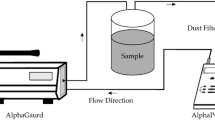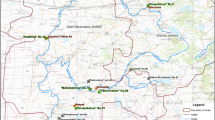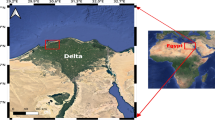Abstract
DURING recent investigations on the distribution of radioactive elements in phosphates1, it was noted that many of the Old Red Sandstone fish remains from north-east Scotland have an abnormally high radioactivity; in particular an unidentified Homostius plate (GSM 89090) was shown by rough radiometric assay to have an activity equivalent to 0.5 per cent U3O8.
This is a preview of subscription content, access via your institution
Access options
Subscribe to this journal
Receive 51 print issues and online access
$199.00 per year
only $3.90 per issue
Buy this article
- Purchase on SpringerLink
- Instant access to full article PDF
Prices may be subject to local taxes which are calculated during checkout
Similar content being viewed by others
References
Davidson, C. F., and Atkin, D., C.R. XIX Int. Geol. Congr. Algiers, 11, 13 (1952).
Neuman, W. F., Neuman, M. I. N., Main, E. R., and Mulryan, B. J., J. Biol. Chem., 175, 705 (1948); 179, 325 (1949).
Author information
Authors and Affiliations
Rights and permissions
About this article
Cite this article
BOWIE, S., ATKIN, D. An Unusually Radioactive Fossil Fish from Thurso, Scotland. Nature 177, 487–488 (1956). https://doi.org/10.1038/177487b0
Issue date:
DOI: https://doi.org/10.1038/177487b0
This article is cited by
-
Deposition of uranium in the bones of animals
Soviet Atomic Energy (1970)
-
An Unusually Radioactive Fossil Fish from Thurso, Scotland
Nature (1966)
-
An Unusually Radioactive Fossil Fish from Thurso, Scotland
Nature (1965)
-
The conditions of formation and classification of exogenous uranium deposits
Soviet Atomic Energy (1964)
-
Localization of Radioactive and Stable Heavy Nuclides in Ocean Sediments
Nature (1957)



